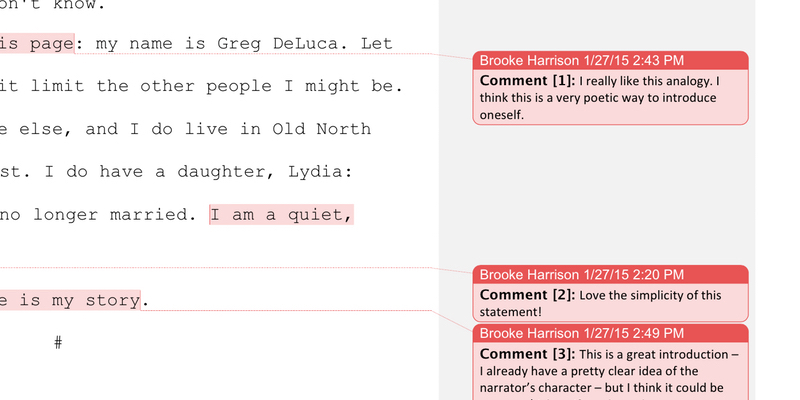OBJECTIVE – To practice editing in a print situation.
Part 1 – editing with a partner
My partner and I both read the class document and emailed each other with the inconsistencies we caught. We put together a list and helped add to the ‘style sheet’ during class.
The style sheet was new for me – I’d never used something like this before. Basically, it’s a proofreading checklist for the purpose of being consistent throughout the document. It’s helpful for the editor when it comes to remembering stylistic decisions – font size, capitalization, numbers.
Part 2 – substantive querying – blog post
class document – critique of “Belleville” – (pdf)
I reread the class document and made my own ‘substantive edits.’ Substantive editing/querying is all about meaning, consistency, and clarity. This type of edit is not merely surface level. It does not address issues like grammar and spelling.
I added my comments to the document using track changes in Word. I’d actually had previous experience with this feature, and also with substantive editing. I have two critique partners, and we frequently exchange our work to provide feedback for one another. Nevertheless, editing the class document was great practice.
I took screenshots of my query and included them in a blog post, detailing my overall process and editorial decisions.
blog post detailing editorial decisions
During this stage of the project, I gave conscious thought to my role as editor and what it entailed. We discussed best practices and behavior in class, including the importance of posing questions to the writer, balancing “negative” comments with positive praise, and offering not only feedback but also suggestions for improvement. While working on my own, I recognized it was helpful to read the text as a whole before commenting, to respond as a reader might respond, and to refrain from forcing my own personal style on the author.
Part 3 – individual edits
individual print edit 1 – letter – (pdf)
individual print edit 2 – essay – (pdf)
I chose two documents to edit individually for this portion of the project. I was given an opportunity to use what I’d learned in stage 2. I was required to make ten sentence-level edits and ten substantive edits, and to write a brief paragraph to the author describing the strengths and weaknesses of the piece. I was also required to provide a context sheet, outlining the rhetorical situation (author, exigence, audience, purpose, constraints, genre) of both documents.
individual print edits context sheet – (pdf)

Leave a Reply